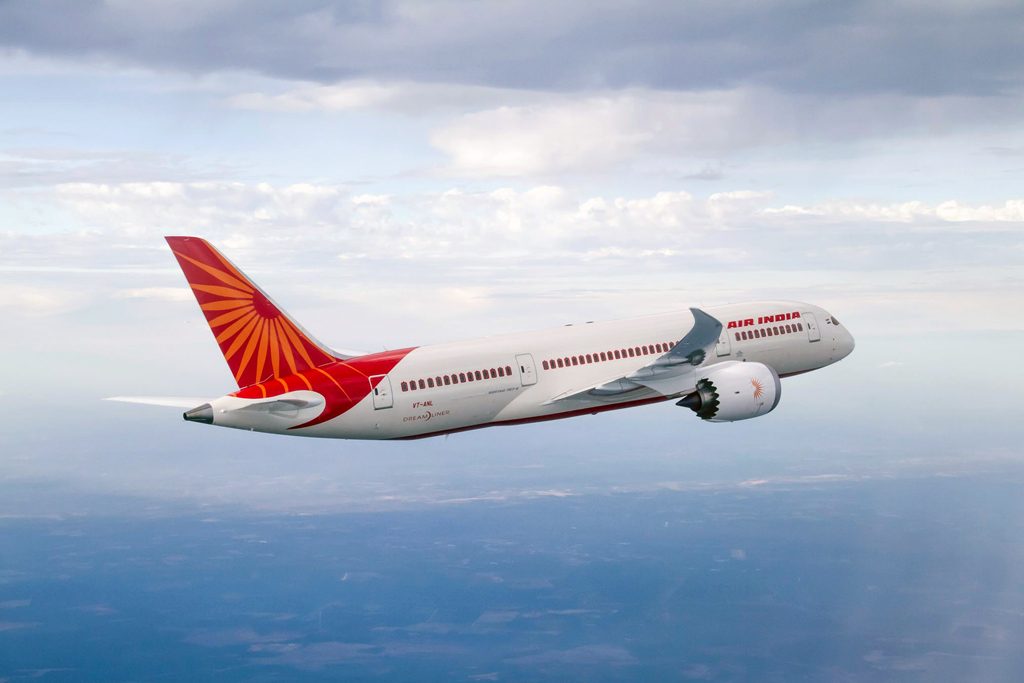'Welcome Back': Tata Group Wins Bid for Air India

Photo Credit: An Air India plane in flight. Air India
The Tata Group, an Indian multinational conglomerate, won its bid to buy state-owned Air India, bringing the flag carrier back to the company that founded it in 1932. The deal is worth 180 billion rupees ($2.4 billion).
As part of its acquisition, the Tata Sons — the holding company that owns the Tata Group — will assume $2 billion in Air India's $8 billion debt and pay the government $400 million. When the deal closes, the conglomerate will own 100 percent of the flag carrier. Air India has not turned a profit for more than 15 years, and it is said to cost the government more than $3 million per day. In a statement announcing the deal, the ruling Bharitiya Janata Party (BJP) said the government has put more than 1 trillion rupees into Air India to keep it afloat.
Tata family scion J.R.D. Tata founded Air India in 1932 as Tata Air Mail. Shortly before India's independence from Great Britain in 1947, the company rebranded the airline as Air India. The government of Jawaharlal Nehru, India's first prime minister, took control of the airline in 1953 as part of its nationalization of key domestic industries.
"Welcome back, Air India!," Ratan Tata, chairman emeritus of the Tata Group, wrote on Twitter, adding, "J.R.D. Tata would have been overjoyed if he was in our midst today."
"It will be our endeavor to build a world-class airline," current Tata Group Chairman Natarajan Chandrasekaran tweeted. But, as Ratan Tata added, "admittedly, it will take considerable effort to rebuild Air India."
And therein lies the rub. Prime Minister Narendra Modi's government has been trying to privatize Air India for several years, first as a partial sale before deciding to fully privatize the loss-making carrier. Rumored bidders over the years have included Singapore Airlines, Etihad Airways, several domestic rivals, as well as the Tata Group. But even as the government loosened the restriction on the acquisition and lowered the amount of debt any suitor would have to assume, most walked away. Until today.
The problem for Air India is that over the decades of its government ownership, it has become a bloated state-run enterprise, with all political factions accusing each other of adding to its bloat and handing out sinecures. The carrier's labor relations have been toxic with employees fighting off any attempt to downsize, and the issue became a political football.
The Modi government is "cleaning the mess by successive Congress governments, which were too incompetent to solve any problems themselves," the BJP said. The Congress party ruled India for decades after independence under the governments of Nehru, his daughter Indira Gandhi, and her son Rajiv Gandhi. India began liberalizing its economy in the 1990s, under the policies of then-Finance Minister Manmohan Singh, who later became a Congress Party prime minister in the early 2000s. Modi's BJP government has been in power since 2014 after defeating Singh's government in the elections.
Given all these problems, why would the successful Tata Group, which makes everything from tea to cars (including the Jaguar-Land Rover group), want Air India? The company said in its statement that the acquisition will add to its stable of carriers. The group already has a hand in two airlines: Vistara, a joint venture with Singapore Airlines, and AirAsia India, a joint venture with discounter AirAsia.
With privatization, the company can downsize the carrier without the threat of political interference. Details are scant as are any reactions from the company's employee groups. Air India currently has about 8,000 employees.
The carrier's 128-aircraft fleet is relatively young. Air India has roughly 30 older Airbus A320-family aircraft as well as 27 A320neos and 20 A321s, according to its latest fleet data. It has 27 Boeing 787-800s, 15 777-300ERs, three 777-200LRs, and owns four 747-400s.
But the real prize for the Tata Group is Air India's international operating rights, slots, and route network. These were negotiated and acquired over the decades since the 1940s, when India still was the "Viceroy's Territory," as reflected still in the country's "VT" ICAO tail numbers. No Indian carrier can match its network breadth, and since the demise of Jet Airways in 2019, no Indian carrier even comes close. SpiceJet and Indigo operate near-international routes mainly to Southeast Asia and the Middle East. Vistara has international ambitions — before the pandemic it operated flights to London, Paris, and Frankfurt — and has announced plans to fly to New York after getting U.S. permission to do so.
By contrast, before the pandemic, Air India operated flights within Asia, and to North America, Africa, Europe, and Australia. The carrier had 70 international routes and said it made two-thirds of its revenues from that network.
And perhaps the most lucrative asset for the Tata Group: Air India's relatively large portfolio of slots at London Heathrow International Airport. It currently operates 10 nonstop routes to the slot-restricted airport. To put that in perspective, JetBlue Airways this year fought a long battle to eke out a single slot at Heathrow.
"On an emotional note, Air India under the leadership of J.R.D. Tata had at one time gained the reputation of being one of the most prestigious airlines in the world," Ratan Tata said, referring to his forebear. "Tatas will have the opportunity of regaining the image and reputation it enjoyed in previous years."
